- Catherine

FiberMall
Answered on 2:30 am
Optical transceivers such as OSFP (Octal Small Form Factor Pluggable) and QSFP-DD (Quad Small Form Factor Pluggable Double Density) are integral to significant high-speed, high-density networking applications in data centers and telecommunications. Dealing with new network speeds and managing bandwidth needs, different factors might lead to a preference for one over the other.
Before listing the pros and cons, it is important to note the crucial differences between them:
1. Form Factor: OSFP is larger than QSFP-DD, resulting in a lower port density. However, this larger size allows OSFP to handle higher wattage, providing better heat dissipation and therefore potentially higher bandwidth per port in the future.
2. Compatibility: QSFP-DD was designed with backward compatibility with QSFP28 in mind. You can use existing QSFP28 cables and modules in a QSFP-DD port.
Now, let’s discuss some of the pros and cons:
OSFP
Pros:
1. Higher Power Handling: OSFP can handle higher power up to 15W, accommodating future bandwidth needs. There is the potential to reach up to 800Gbps for future uses.
2. Thermal Efficiency: The larger form factor leads to better heat dissipation, which may become increasingly important as connections’ power utilization and density increase.
Cons:
1. Low Port Density: Due to their larger size, data center rack units fitted with OSFP ports have a lower overall port density compared to those using QSFP-DD.
2. No Backward Compatibility: OSFP is not backward compatible with existing form factors, which can complicate upgrades and increase costs.
QSFP-DD
Pros:
1. Backward Compatibility: QSFP-DD is backward compatible with QSFP, and QSFP28 modules. This allows for easier upgrading while lowering costs by reusing existing hardware.
2. High Port Density: The smaller QSFP-DD form factor allows for more ports on a single switch, leading to a more compact and dense arrangement which can save precious space in data centers.
Cons:
1. Lower Power Handling: QSFP-DD power handling is lower than OSFP, making it harder to scale for future increased transmission rates.
2. Thermal Concerns: Due to the high port density and higher power demand for future standards, managing thermal dissipation may become a challenge.
The choice between QSFP-DD and OSFP will depend on your specific circumstances and long-term network goals. If you have existing QSFP infrastructure and you’re seeking a high-density configuration with measured growth in mind, QSFP-DD is a solid choice. If, however, you’re preparing for immense growth and want to set up your data center for future advancements (especially those requiring high power and efficient thermal handling), OSFP could be the better choice.
People Also Ask
Broadcom Launches the Industry’s First 800G AI Ethernet NIC: Thor Ultra, Fully Compliant with UEC Standards
In a groundbreaking move for AI networking, Broadcom has unveiled the Thor Ultra, the industry’s first 800G AI Ethernet network interface card (NIC) chip that fully complies with the Ultra Ethernet Consortium (UEC) specifications. This innovative PCIe card enables seamless interconnections among hundreds of thousands of diverse XPUs, powering next-generation
Essential Fiber Cleaners and Tools from FiberMall: Your Complete Guide to Maintaining High-Performance Networks
In the fast-paced world of data centers, cloud computing, enterprise networks, and telecommunications, reliable fiber optic connections are the backbone of seamless data transmission. However, even the most advanced fiber optic infrastructure can falter if connectors are contaminated with dust, oils, or debris. This is where high-quality fiber cleaners and
Meta’s GB300 Liquid-Cooled AI Server: Clemente (1U 4xGPU) – Revolutionizing AI Infrastructure
In the fast-evolving world of AI data centers, liquid-cooled servers are the backbone of high-performance computing. If you’re exploring cutting-edge solutions for cloud computing, enterprise networks, or AI-enabled environments, Meta’s GB300 liquid-cooled AI server – codenamed Clemente – stands out. This 1U powerhouse packs 4x GPUs into a compact form
Optical Modules and PCBs: Driving High-Speed Data Transmission in the AI Era
In the fast-paced world of data communication, the demand for efficient, high-bandwidth solutions has never been greater. As AI-driven applications and massive data processing push the boundaries of network performance, optical modules and their integral optical module PCBs have evolved rapidly to meet these challenges. This evolution not only enhances transmission efficiency
Hotchip 2025 Day 0 Tutorials: Essential Insights on AI Workloads, Rack Architectures, and Custom GB200 Solutions
In the ever-evolving world of AI and data center technologies, Hotchip 2025 kicked off with an enriching Day 0 Tutorials lineup. As a staple event in the industry, this year’s sessions served as an appetizing prelude, focusing on data center racks in the morning and kernel programming in the afternoon.
Deep Dive into NVIDIA GB200 Liquid Cooling Plate Design: Advanced Liquid Cooling for AI Chips
Next-generation AI chips like NVIDIA’s GB200 are pushing the boundaries of performance. But this immense power comes at a cost: staggering heat generation. A single GB200 chip package consumes up to 2700 W of power. With such high power in such a compact space, traditional air-cooling systems simply can’t keep up.
Related Articles

800G SR8 and 400G SR4 Optical Transceiver Modules Compatibility and Interconnection Test Report
Version Change Log Writer V0 Sample Test Cassie Test Purpose Test Objects:800G OSFP SR8/400G OSFP SR4/400G Q112 SR4. By conducting corresponding tests, the test parameters meet the relevant industry standards, and the test modules can be normally used for Nvidia (Mellanox) MQM9790 switch, Nvidia (Mellanox) ConnectX-7 network card and Nvidia (Mellanox) BlueField-3, laying a foundation for
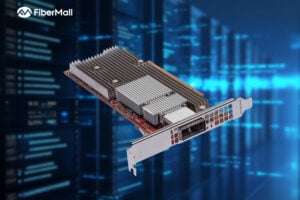
Broadcom Launches the Industry’s First 800G AI Ethernet NIC: Thor Ultra, Fully Compliant with UEC Standards
In a groundbreaking move for AI networking, Broadcom has unveiled the Thor Ultra, the industry’s first 800G AI Ethernet network interface card (NIC) chip that fully complies with the Ultra Ethernet Consortium (UEC) specifications. This innovative PCIe card enables seamless interconnections among hundreds of thousands of diverse XPUs, powering next-generation
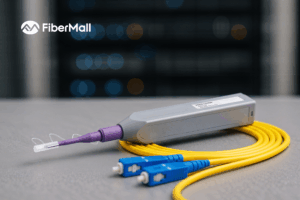
Essential Fiber Cleaners and Tools from FiberMall: Your Complete Guide to Maintaining High-Performance Networks
In the fast-paced world of data centers, cloud computing, enterprise networks, and telecommunications, reliable fiber optic connections are the backbone of seamless data transmission. However, even the most advanced fiber optic infrastructure can falter if connectors are contaminated with dust, oils, or debris. This is where high-quality fiber cleaners and

Meta’s GB300 Liquid-Cooled AI Server: Clemente (1U 4xGPU) – Revolutionizing AI Infrastructure
In the fast-evolving world of AI data centers, liquid-cooled servers are the backbone of high-performance computing. If you’re exploring cutting-edge solutions for cloud computing, enterprise networks, or AI-enabled environments, Meta’s GB300 liquid-cooled AI server – codenamed Clemente – stands out. This 1U powerhouse packs 4x GPUs into a compact form
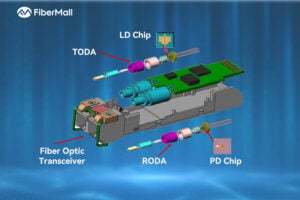
Optical Modules and PCBs: Driving High-Speed Data Transmission in the AI Era
In the fast-paced world of data communication, the demand for efficient, high-bandwidth solutions has never been greater. As AI-driven applications and massive data processing push the boundaries of network performance, optical modules and their integral optical module PCBs have evolved rapidly to meet these challenges. This evolution not only enhances transmission efficiency
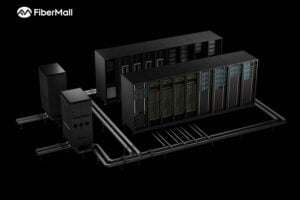
Hotchip 2025 Day 0 Tutorials: Essential Insights on AI Workloads, Rack Architectures, and Custom GB200 Solutions
In the ever-evolving world of AI and data center technologies, Hotchip 2025 kicked off with an enriching Day 0 Tutorials lineup. As a staple event in the industry, this year’s sessions served as an appetizing prelude, focusing on data center racks in the morning and kernel programming in the afternoon.
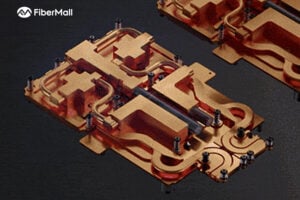
Deep Dive into NVIDIA GB200 Liquid Cooling Plate Design: Advanced Liquid Cooling for AI Chips
Next-generation AI chips like NVIDIA’s GB200 are pushing the boundaries of performance. But this immense power comes at a cost: staggering heat generation. A single GB200 chip package consumes up to 2700 W of power. With such high power in such a compact space, traditional air-cooling systems simply can’t keep up.
